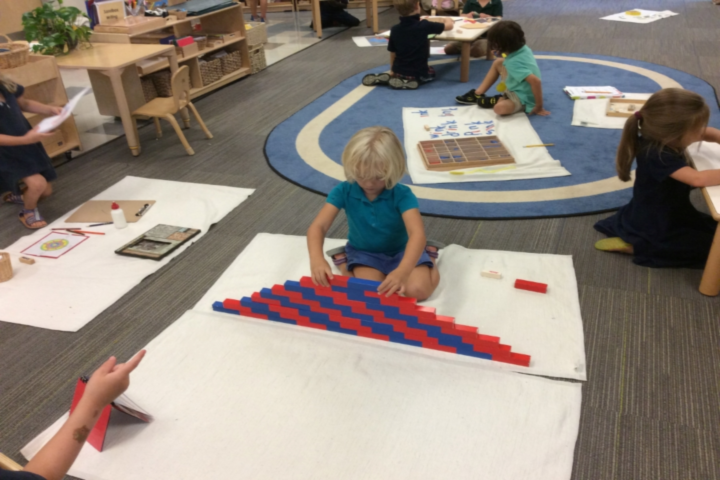Murray-LaSaine Elementary School Principal Meredith Wallace has no use for sticker charts or special recognition for perfect attendance. She’s also not a big fan of letter grades at her South Carolina school.


Principal Meredith Wallace of the Murray-LaSaine Elementary School in Charleston, South Carolina has no use for sticker charts or special recognition for perfect attendance. She’s also not a big fan of letter grades.
“There’s no need for us to put a letter grade on what they can do,” she told the Post and Courier. “We just want them to keep learning.”
The public school on James Island is among dozens of Montessori schools that have emerged in the Palmetto State since it adopted the self-directed approach to early education more than two decades ago.
Unlike most other places where the majority of Montessori schools are private, 7,402 South Carolina students at 45 public schools in 24 districts participated in Montessori programming in 2016, including large percentages of minorities and low-income students. And it’s exactly the type of situation Italian physician and educator Maria Montessori crafted this educational approach for when she developed the program for low-income families in the early 1900s.
“South Carolina is a wonderful hub for Montessori,” said Timothy Purnell, executive director of the American Montessori Society. “Low-income students are now afforded an opportunity for an education that is self-directed. It’s vastly different than most education systems we see today.”
The Post and Courier reports:
Montessori classrooms often combine children from a broad age range: Age 3 through kindergarten in primary classrooms; grades 1 through 3 in lower elementary; and grades 4 through 6 in upper elementary. Each school day includes about three hours of self-directed activities, with children choosing their own tasks involving a set of classroom materials.
The unique situation in South Carolina allowed researchers at The Riley Institute to examine the effectiveness of the Montessori approach in public schools, and the results are encouraging.
A three year study that ended in 2015-16 showed that “when comparted to non-Montessori public school students across the state, Montessori students were more likely to have met or exceeded state standards in each of the four subjects” – English, math, science and social studies, according to the findings. “Subgroup analysis indicated that low-income Montessori students scored significantly higher than low-income non-Montessori students.”
Montessori students also “exhibited significantly higher levels of creativity than non-Montessori students,” “demonstrated higher school attendance,” and “were significantly less likely than similar non-Montessori students to have had a disciplinary incident or have served a suspension during the school year,” the Riley Institute reports.
Researchers at the Institute for Advanced Studies in Culture noted the distinctive approach of Montessori schools that drives its success both with academics and developing self-motivated, responsible, curious and persistent learners.
“The Montessori model views ‘the child as one who is naturally eager for knowledge’ and ‘values the human spirit and the development of the whole child – physical, social, emotional, cognitive,’” sociologist David Sikkink wrote in “The Content of Their Character,” an analysis of character education in a variety of U.S. schools.
“Key characteristics of the program ‘include multiage groupings that foster peer learning, uninterrupted blocks of work time, and guided choice of work activity,’” he wrote.
The blog, Children of the Redwoods offers a short summary of the Montessori approach to education with “Montessori 101, The Basics.”
The primer explains the background and methods involved, and why the biggest reward comes from learning itself, rather than stars or stickers.
For further reading on CultureFeed